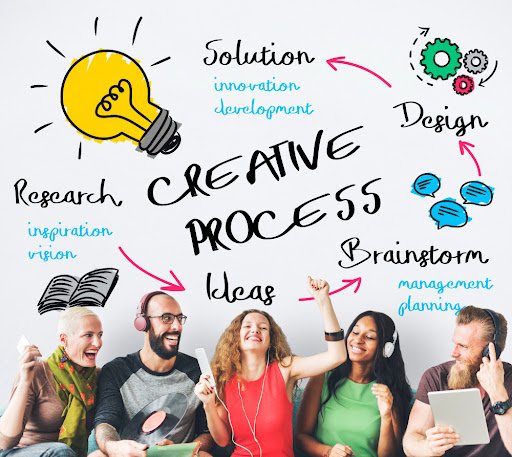Are you struggling with high turnover rates or poor employee retention after your fresher induction program? Do you want to know how to make your fresher induction program more effective? It may be time to embrace design thinking. By using this approach, you can create a more effective, engaging, and impactful fresher induction program. In this article, we’ll explore the key elements of an effective fresher induction program and how to apply design thinking strategies to each of these components.
Understanding the Importance of Design Thinking
Design thinking is a problem-solving approach that emphasizes empathy, collaboration, experimentation, and creativity. By focusing on the needs and experiences of users, design thinking can help you create more innovative and user-friendly solutions. Applying design thinking to your fresher induction program can help you identify pain points, discover new opportunities, and design more engaging and impactful experiences for your new hires.
Design thinking involves a deep understanding of the users’ needs, wants, and aspirations. In the context of fresher induction programs, it means understanding the needs and expectations of new employees. This can be achieved by conducting research and interviews to gather insights into their prior experiences, expectations, and goals. Based on these insights, induction programs can be designed to meet their specific needs, making them more engaging and effective.
How to Make Your Fresher Induction Program More Effective Begins With Understanding the Key Elements of such a Program
Before we dive into design thinking strategies, let’s first discuss the essential components of a successful fresher induction program:
Orientation: This is the initial stage of the program, where you introduce new hires to your company’s mission, values, culture, and policies. It’s crucial to make a positive first impression and help new hires feel welcomed and valued.
Training: This is the main stage of the program, where you provide new hires with the knowledge, skills, and tools they need to perform their job duties. It’s essential to make training engaging, interactive, and relevant to their roles.
Socialization: This is the final stage of the program, where you help new hires integrate into your company’s culture and build relationships with their peers and mentors. It’s crucial to provide opportunities for networking, feedback, and recognition.
Applying Design Thinking to Your Fresher Induction Program

Now that we’ve discussed the key components of a fresher induction program let’s explore how to apply design thinking strategies to each of them:
Design Thinking Strategies for Orientation
How to make your fresher induction program more effective for orientation? To create an engaging and impactful orientation experience, try these design thinking strategies:
- Empathize: Put yourself in the shoes of your new hires and think about their needs, expectations, and concerns. Use surveys, interviews, or focus groups to gather feedback and insights.
- Define: Identify the main challenges or opportunities you want to address in your orientation program. Create a clear and concise problem statement that summarizes your goals and objectives.
- Ideate: Brainstorm a variety of ideas and solutions that can address the challenges or opportunities you identified. Encourage collaboration and diversity of perspectives.
- Prototype: Create a rough draft of your orientation program using low-cost materials such as paper, post-it notes, or sketches. Test your prototype with a small group of new hires and gather feedback.
- Test: Evaluate the effectiveness of your orientation program and gather feedback from new hires, managers, and other stakeholders. Iterate and refine your program based on the feedback you receive.
Possible Ways to Make Your Fresher Induction Program More Effective Using Design Thinking Strategies
- Gamify: By empathizing with the new hires and understanding their needs and preferences, we can identify the areas where the induction program may feel dry or boring. By ideating with them, we can create game-based elements such as challenges, rewards, and badges that align with the specific learning goals and objectives of the induction program.
- Personalize: Through the use of design thinking techniques such as personas, user journeys, and empathy maps, we can empathize with the new hires and gain deeper insights into their learning styles, strengths, and weaknesses. By co-creating customized training experiences with them, we can ensure that the induction program is tailored to their individual needs and preferences.
- Microlearning: By identifying the most critical information and skills that new hires need to learn, we can use a design thinking approach to break down this information into small and digestible chunks. By prototyping and testing various interactive and engaging learning experiences that incorporate a variety of media, we can ensure that the new hires are able to learn and retain the information more effectively.
- Storytelling: Through user research and ideation, we can gather real-life examples, case studies, and testimonials that are relevant and relatable to the new hires. By co-creating storytelling experiences with them, we can make the induction program more engaging and impactful, helping new hires to better understand how the information they are learning can be applied in real-world situations.
- Feedback: By applying a design thinking approach to provide regular and constructive feedback to new hires throughout the training process, we can ensure that the induction program is aligned with their learning goals. By using user testing and iteration to improve the feedback process, we can make sure that the new hires are receiving feedback that is both helpful and actionable.
Incorporating design thinking in fresher induction programs can not only make them more engaging and interactive but also more effective in achieving their objectives.
Benefits of Applying Design Thinking to Fresher Induction Programs
By applying design thinking principles to fresher induction programs, organizations can experience several benefits.
Firstly, it can enhance employee engagement and motivation. A well-designed induction program that addresses the needs and expectations of new employees can create a positive first impression and foster a sense of belonging.
Secondly, it can lead to higher retention rates. Employees who feel valued and supported are more likely to stay with the company.
Thirdly, it can result in higher productivity and performance. Induction programs that provide the necessary tools and training can equip employees with the skills they need to succeed.
Best Practices for Design Thinking in Fresher Induction Programs

How to make your fresher induction program more effective using Design Thinking? In order to successfully apply design thinking to your fresher induction program, here are some best practices to keep in mind:
- Involve all stakeholders: In order to create a program that truly meets the needs of both the organization and the new hires, it’s important to involve all stakeholders in the design thinking process. This includes HR professionals, hiring managers, current employees, and of course, the new hires themselves. By incorporating a variety of perspectives, you can ensure that your program is inclusive, relevant, and effective.
- Prioritize empathy: Design thinking is all about understanding the needs and experiences of your users. In this case, your users are your new hires. Make sure you’re prioritizing empathy throughout the design process by gathering feedback, actively listening, and creating opportunities for dialogue.
- Test and iterate: One of the key benefits of design thinking is its emphasis on iteration. As you design your fresher induction program, be sure to test your ideas early and often. This can help you catch issues and make adjustments before rolling out the final program.
- Embrace creativity: Design thinking is inherently creative. Encourage your team to think outside the box and generate innovative solutions. By embracing creativity, you can create a program that’s engaging, memorable, and effective.
Examples of Effective Fresher Induction Programs using Design Thinking
Several organizations have successfully applied design thinking to their fresher induction programs. Some of them are listed below:
Infosys
As one of the largest IT companies in India, Infosys redesigned its induction program using design thinking principles. The new program included interactive sessions, games, and simulations to create a more engaging and immersive experience for new employees. As a result, the company saw a 50% reduction in attrition rates among freshers.
Airbnb
Airbnb has a unique approach to fresher induction, which includes a month-long “Airbnb Experience.” During this experience, new hires are immersed in the company’s culture and values through a series of hands-on activities, team-building exercises, and workshops. Design thinking plays a central role in this experience, as new hires are encouraged to approach challenges with a human-centered mindset.
Intuit
Intuit’s “New Hire Immersion” program is designed to give new hires a deep understanding of the company’s culture, values, and goals. One of the key components of the program is a design thinking workshop, where new hires learn the basics of design thinking and then apply those principles to a real-world business challenge.
Conclusion
How to make your fresher induction program more effective is a question that HR leaders frequently grapple with. Incorporating design thinking in fresher induction programs can make them more engaging, interactive, and effective. By empathizing with the fresher experience, creating design thinking workshops, gamifying the induction process, introducing mentoring programs, and using storytelling to build connections, we can create induction programs that are both informative and enjoyable. By doing so, we can ensure that freshers feel welcomed, supported, and prepared to contribute to the company’s success.
Design thinking can be a powerful tool for creating effective fresher induction programs. By prioritizing empathy, involving all stakeholders, and embracing creativity, you can create a program that truly meets the needs of your organization and your new hires. Don’t be afraid to test and iterate along the way, and be sure to gather feedback and make adjustments as needed. By taking a design thinking approach to fresher induction, you can create a memorable and effective experience for your new hires that sets them up for success from day one.
Image credits: <a href=”https://www.freepik.com/free-photo/creative-process-people-light-bulb-graphic-concept_16459206.htm#query=design%20thinking%20for%20recruitment&position=2&from_view=search&track=robertav1_2_sidr”>Image by rawpixel.com</a> on Freepik
About the author
A Haryanvi by origin, an entrepreneur at heart and a consultant by choice, that’s how Ajay likes to introduce himself! Ajay is the Founding Partner at Humane Design and Innovation Consulting (HDI). Before starting HDI, Ajay founded the Design Thinking and Innovation practice at KPMG India. His 16+ years of professional career spans across various roles in product and service design, conducting strategy workshops, storytelling and enabling an innovation culture. He has coached 50+ organizations and 2000+ professionals in institutionalizing design and innovation practices. He loves to blog and speak on topics related to Design Thinking, Innovation, Creativity, Storytelling, Customer Experience and Entrepreneurship. Ajay is passionate about learning, writing poems and visualizing future trends!
We at Humane Design strongly believe in the human ethos and draw inspiration from humans and other elements of nature to design innovative solutions for organizations of all sizes. We will be glad to be your success partner. Email us your requirements at explore@humaned.in.



